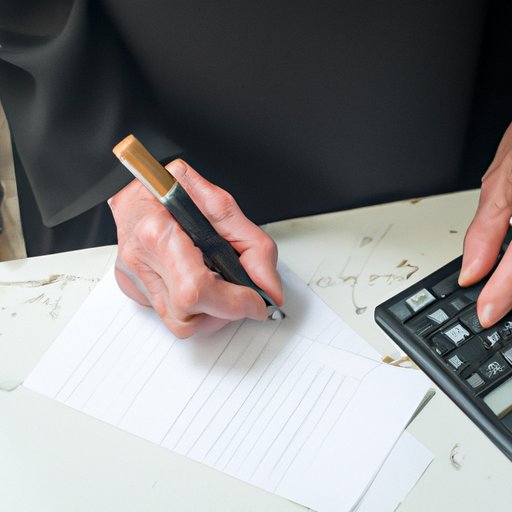
Introduction
Opening a checking account can be an intimidating task, especially if you’re not sure where to start. Do you need specific documents? Will there be fees involved? In this article, we’ll provide you with everything you need to know to make the process as easy as possible.
Step-by-Step Guide: How to Open a Checking Account
The basic process of opening a checking account includes filling out an application, providing identification, and making a deposit. If you’re unsure whether you want to open an account online or in person, know that online applications are easy to complete and are typically available 24/7. If you want to open an account in person, you may need to schedule an appointment depending on the bank.
A Foolproof Checklist for Opening a Checking Account
Before starting to open a checking account, it’s important to have all necessary information and documents in hand. The following checklist includes everything needed:
- Primary form of identification (usually a driver’s license or passport)
- Secondary form of identification (birth certificate or Social Security card)
- Proof of residency (utility bill or lease agreement)
- Initial deposit
The Do’s and Don’ts of Opening a Checking Account
When opening a checking account, it’s important to avoid common mistakes. Do make sure you have all the required documents before applying. Don’t forget to read the fine print, as some accounts have monthly fees and minimum balances. Another important tip is to shop around for the best account for you.
What You Need to Know Before Opening a Checking Account
Before opening a checking account, it’s important to understand the features and benefits of this type of account. Checking accounts allow you to deposit and withdraw money as needed and often come with a debit card. They’re a great way to keep your money safe and easy to access.
5 Essential Documents You’ll Need to Open a Checking Account
The following documents are generally required to open a checking account:
- Valid photo identification
- Proof of Social Security number
- Proof of current address
- Initial deposit
- Additional identification documents as required by the bank (such as a student ID or work ID)
Each document is necessary to verify your identity and help prevent fraud.
Understanding the Fine Print: Fees and Requirements for Checking Accounts
Before opening a checking account, make sure to read the fine print and understand any associated fees such as monthly maintenance fees or overdraft fees. Know the requirements for keeping your account open, such as minimum balances or making direct deposits. By understanding the fees and requirements, you can avoid unexpected charges or account closure.
Tips for Choosing the Right Checking Account for Your Financial Needs
You’ll want to choose a checking account that works best for your financial needs. Consider factors such as ATM network availability, monthly maintenance fees, and interest rates. Also, research whether there are any perks offered with the account such as cashback rewards.
Conclusion
Opening a checking account is a simple process with the right information. Take the time to gather the necessary documents and do some research to find the best account for your needs. By following our guide, you’ll be on your way to financial success in no time.





